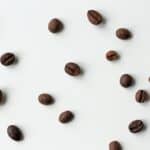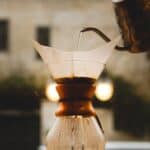Ranked: The Most Caffeinated Coffee Bean Varieties
Table of Contents
Toggle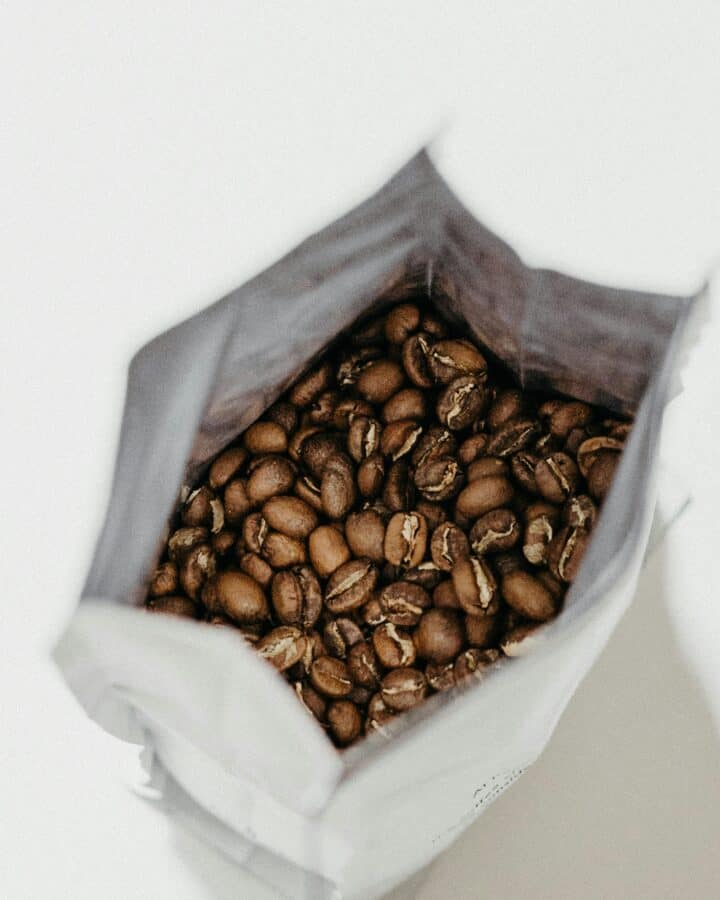
Whilst a lot of people enjoy the taste and aroma of coffee in the morning, one of the main attractions to this dark beverage is the fact that it perks us up. The caffeine content of freshly brewed coffee gives millions of people the world over the spring the step they need to get up and seize the day.
However, there are some people that don’t share the magic combination of loving the taste of coffee and the perk that caffeine gives them.
Some coffee lovers can’t get enough of the taste, but may have a low caffeine tolerance or simply get their caffeine from other sources, so want a coffee with as little of the stuff as possible.
On the other hand, some people need that buzz from a caffeinated drink in the morning but don’t want to slurp on a sugary energy drink. For these people, the best option may well be a small, strong espresso or a long coffee with milk and a mild sweetener. This will still deliver that caffeine hit but dilute that strong coffee flavour.
Either way, it is important to understand how you can choose the best beans and brewing methods to suit your caffeine needs, so you can make your cup of joe work for you!
Robusta coffee beans contain the highest amount of caffeine, at 2.7%. Next is the popular Arabica bean at 1.5% caffeine, followed by the lesser-known Liberica and Excelsa beans which contain 1.2% and 1.1% respectively.
Coffee Beans with the Most Caffeine
Here, I have ranked coffee bean varieties by their caffeine potency, from strongest to weakest. The rankings are based on the USFDA estimates.
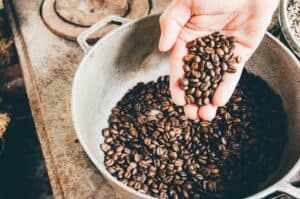
1. Robusta
Robusta coffee beans contain the most caffeine but some margin. With around 2.7% caffeine content, Robusta not only has the strongest taste but also delivers the biggest wake-up call in the morning.
A typical 6oz cup of drip-brewed Robusta bean coffee will contain approximately 199 mg of caffeine.
2. Arabica
Arabica beans are by far the most popular in the world. Accounting for more than 60% of global coffee consumption, there is a reason why these versatile, sweet-tasting beans are loved so much. One is for their caffeine content. Whilst they are nowhere near as potent as their Robusta brothers, they strike a goldilocks balance of taste and caffeine content.
Arabica beans contain around 1.5% caffeine, so are more gradual with their release of that invigorating kick.
A 6oz cup of drip-brewed Arabica coffee will contain around 119 mg of caffeine.
3. Liberica
Another extremely rare coffee bean variety is the Liberica bean. The smokey and woody flavour is reminiscent of the Robusta bean they descend from, making the Liberica bean a great low-caffeine alternative if you are looking for that strong, punchy flavour.
Liberica beans contain 1.2% caffeine, making them a great sweet spot if you are looking for an alternative coffee bean that is not going to keep you up late at night. A typical 6oz serving of drip-brewed Liberica coffee contains around 90 mg of caffeine.
4. Excelsa
Next on the list is the lesser-known but delicious Excelsa bean. Sporting unique sour and tart flavours, Excelsa beans are hugely underrated given that they are a closely related variety of the hugely popular Arabica bean.
If you are a coffee enthusiast looking for a slightly less caffeinated bean with a one-of-a-kind flavour, Excelsa could be a great option for you. These beans contain around 1.1% caffeine, meaning that a standard 6oz cup using the drip brewing method will give you approximately 82 mg of caffeine.
5. Racemosa
Most definitely the rarest coffee bean on the planet, the Racemosa coffee variety is very low in caffeine. It is grown in a small forest lining Mozambique and Kwa-Zulu Natal in South Africa so getting your hands on it is incredibly difficult. This rarity also makes it difficult to ascertain how much caffeine the bean contains. Many sources will call Racemosa coffee ‘caffeine free’, however, it does contain a very small dose at 0.38%.
You can therefore expect just 27 mg of caffeine from a 6oz cup of drip-brewed Racemosa coffee.
This trace amount of caffeine does mean you will hardly notice any effects from drinking this coffee variety. But, it is worth pointing out that strictly speaking, it does contain a very small amount of caffeine for those that may have an intolerance.
6. Decaffeinated
However, decaf coffee does not mean the beans are 100% free of caffeine. The washing process, which is done with pure water or water with a solution of chemicals, removes 97% of caffeine by US standards, and over 99.9% for the European market.
This results in decaf coffee beans containing anywhere from 2 mg to 8 mg of caffeine. This is an absolutely minuscule amount that is as near as damn caffeine free! So, if you want to drink coffee later in the day but want to guard against being kept up all night, decaf is definitely the way to go.
It is worth mentioning at this point that the figures above are based on USFDA estimates and will of course vary depending on the origin of the coffee bean you are using, the brewing method and how you actually apply that method to produce the coffee i.e. overall brew time, water ratios etc.
Coffee Brewing Methods with the Most Caffeine
So, we have discussed how using different coffee beans affects how much caffeine your cup of coffee will contain. This, afterall should be the first decision you make when selecting your coffee as it will determine the overall taste, strength and caffeine content of your drink.
However, the way you prepare your coffee will also play a part in how strong it will end up being.
Bear in mind that grind size, bean freshness and brewing time all play a role in determining overall caffeine content. Given the amount of variables here, we will go by the maximum caffeine levels that can be extracted, given the data we have available by researching the web.
1. French Press
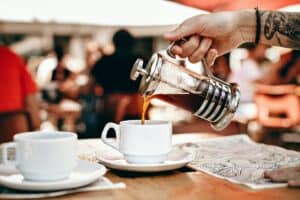
Using a french press to brew your coffee will produce the highest concentration of caffeine. You can expect upwards of 150 mg per 6oz serving from a cup of coffee brewed using a french press.
To get the most out of this brewing method, leave your coffee brewing untouched for as long as you can. You may find that a crust forms on the top of your brew, simply remove this and let the brewing process continue.
Remember that the longer you leave your grounds to brew, the more bitter and strong your coffee will taste. I find the sweet spot is between 10 and 15 minutes for a strong but not overly bitter coffee.
2. Pour Over (Filter Coffee)
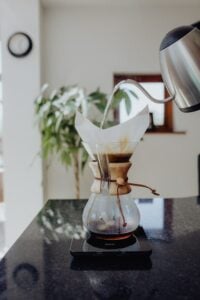
Filter or pour-over coffee is another popular brewing method that will produce a highly caffeinated drink. You can expect around 120 mg per 6oz serving on average. However, depending on the brew time and size of your grind, you may get significantly less than this.
Be sure to grind your coffee finely to ensure the water seeps through the granules gradually, covering each one and extracting the maximum caffeine and coffee flavour. This is one of the purest forms of coffee brewing and has been used for hundreds of years, so it clearly works!
3. Aeropress
The Aeropress is a relatively new invention that forces ground coffee through a fine sieve using air pressure to maintain optimum freshness. These have been popularised by busy, on-the-go office workers and backpackers that don’t want to compromise their love for freshly brewed coffee. Compared to a pour over method like V60, Aeropress coffee tends to be bolder and stronger tasting due to the faster, pressure driven coffee extraction.
On average, you can expect a 6oz cup of Aeropress coffee to pack 105 mg of caffeine, a pretty good amount considering how fast it is to produce! Unlike traditional brewing methods that get the best results out of brewing ground coffee for extended periods of time, the Aeropress favours speed. For the best results, brew for no longer than 30 seconds and you’ll have a punchy cup of coffee to enjoy.
If you want a bold taste with the caffeine hit dialled back a bit, the Aeropress is a great option for you.
4. Espresso

Espresso machines are fantastic for producing the freshest coffee possible with minimum fuss. They come in different shapes and sizes but one thing is for sure, they always deliver a high-quality caffeine hit!
As the purest, most concentrated form of coffee out there, espresso is served as a 1 oz shot. This typically comes in at around 50 mg of caffeine per serving. However, a lot of people go for a double espresso which of course ups the caffeine content significantly to 100 mg per serving.
A short, sharp slurp of the espresso is a great way to get that much-needed pick-me-up that so many of us need to get through the day, and there’s no better device for it than a purpose-built espresso machine!
5. Instant Coffee
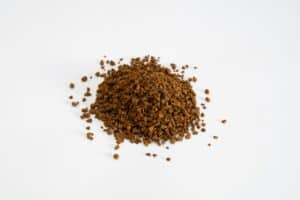
Whilst it is not a way of brewing coffee strictly speaking, instant coffee is incredibly popular and is a handy alternative when you don’t have traditional brewing equipment to hand. Whilst instant coffees vary wildly in quality and caffeine content, an average 6oz cup will contain roughly 80 mg. Due to its freeze or air-dried nature, instant coffee is typically less potent than freshly brewed.
Summary
Of course, there are a lot of variables when it comes to the strength of your morning coffee. The bean type, brewing method, grind size, bean freshness and brew time all have their part to play.
But, we now know which beans and brewing methods produce the most caffeinated results, so you can adjust your coffee preparation based on the flavours and strength you want!
For the strongest results, you’re best off going for Robusta beans in a french press, whereas for a more balanced strength and pure flavour, go for a high-quality Arabica using a pour-over filter. If you are looking for something a bit different, maybe go for a Liberica bean using an Aeropress for a punchy taste without the caffeine rush.
Coffee Beans Caffeine Frequently Asked Questions
Robusta coffee beans contain the most caffeine by some margin. Their next best alternative, Arabica, contain around half the caffeine content.
Generally speaking, the French Press and Pour Over filter coffee produce the most caffeine due to their long steep time. Whilst Espresso contains the most caffeine per gram, it is often served in much smaller quantities, so doesn’t contains as much caffeine overall per serving.
Caffeine is a natural stimulant that can improve alertness, reduce fatiegue and sharpen cognition. However, if too much is consumed too late in the day, caffeine can disrupt sleep, cause anxiety and cause headaches.


